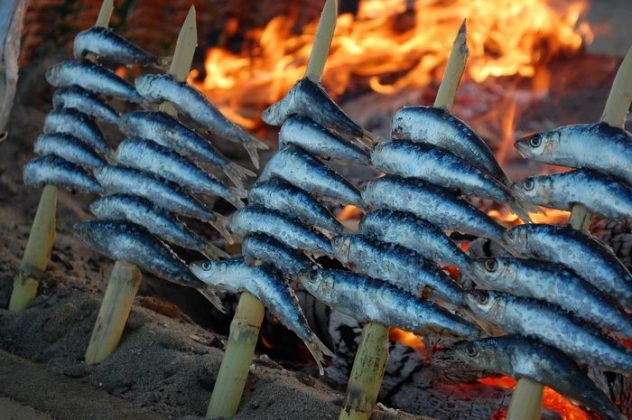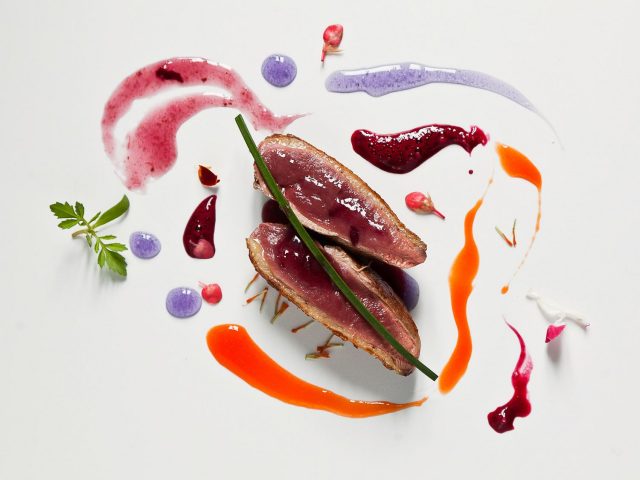- Have any questions?
- +34 951 273 575
- info@diningsecretsofandalucia.com

A cafe con leche could increase your life by nine minutes, new 16-year study finds
19 July, 2017
New Catalan blue wine Skyfall has Spanish drinkers raising a glass
27 July, 2017THEY are the aroma and flavour of summer on the Costas and a spectacle to see – skewers of shimmering silver fish fresh from the sea, spit-roasted al fresco until golden over olive wood fires laid out in traditional fishing boats.
Espeto sardines form a continuous barbecue chain on beaches along the coast from east of Malaga to west of Cadiz, their familiar salty scent marking the annual transition from spring into summer.
Best enjoyed at a beach bar by the sea shore with the wind in your hair and your toes in the sand, tourists are enchanted by this casual dining tradition.
Spit-roasted sardines are as much of a staple on Andalucia’s gastronomic menu as its famous goats cheeses and home-grown pata negra jamon.
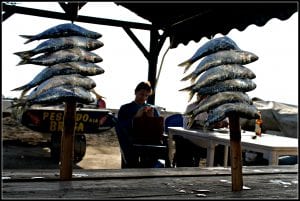
The tradition of cooking the fish in this way dates back to the master mariners of Phoenician times. After a long day working at sea, the famished fishermen would come back to shore in search of fast food.
They began building small fires in their boats to grill sardines, the least expensive fish in their catch and a popular food choice among the poor.
Royal approval

It was quite by accident that a Spanish monarch elevated them from a lowly peasant dish to the delicacy they have become today.
History reveals that espetos were first ‘discovered’ by the culinary cognoscenti in 1884, when King Alfonso XII was travelling to Axarquia in order to survey the havoc wreaked by an earthquake.
On his way south, he stopped in El Palo, one of the oldest fishing villages in Malaga province. The king soon found himself in Miguel Martinez Soler’s chiringuito, a humble beach shack which was the first of its kind in the area.
The restaurant owner presented him with a skewer of espetos but when His Highness reached for a knife and fork, Soler encouraged him to use his fingers.
Entertained by the prospect of eating a mano, the monarch was soon licking his fingers and bestowed the highest praise on the dish.
Thereafter, the owner also became known by a new title – ‘Sardine Miguel’ or ‘Miguel de las Sardinas’ – while the espeto grew in popularity, resulting in a profusion of chiringuitos popping up on beach fronts.
Pushing the boat out
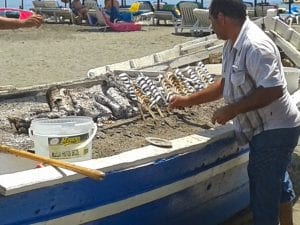
Although chiringuitos have become fancier over the decades, the method for preparing and cooking espetos remains largely the same.
Before they are cooked, the sardines are salted and placed in a bucket of ice for at least 30 minutes to make the flesh firmer. Traditionally, only olive oil and salt are used to season the fish but more adventurous chefs like to add herbs, such as rosemary, thyme or bay leaves, for extra flavour.
The dish is constructed by spearing the sardines on a bamboo skewer – six to each spit. Medium-sized fish make the best espetos and they are ordered on the skewer from largest to smallest, with the bigger fish closer to the coals. The espetos are then stuck into sand and cooked over an olive-wood fire.
Most amoragadores, or grill-masters, still cook them in boats on the sand as their fishermen ancestors did. The last step in the process is to enjoy the finished product. Espetos are best served with a crisp salad, bread and olive oil and a glass of chilled sangria or red wine, and eaten as close to the beach as possible.
A seasonal treat
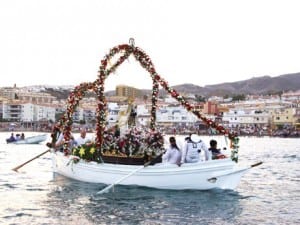
As tradition dictates, the best time for eating espetos is during the months with no ‘r’ in them (May, June, July, August).
A more whimsical Spanish saying states that they should be eaten from ‘virgin to virgin’, which refers to the Virgen del Carmen Festival in July, and the Virgen de la Victoria Festival in September. This is because the sardines are said to be fatter at this time, which makes for a better flavour and a more substantial meal.
For holidaymakers keen to savour the full cultural experience of Spain, it would be a sin to return home without sampling this authentic dish in its equally authentic chiringuito setting.
At a recent competition in Marbella to find the best espetos in Malaga province, El Canarias Playa beach bar in Torremolinos won the judges’ vote while El Madero beach bar in Estepona scooped the popular vote.
Although Marbella Mayor Jose Bernal maintains that his own town produces the tastiest spit-roast sardines, adding these two chiringuitos to your holiday itinerary would certainly be a good decision if you want to treat your taste buds to Spain’s most emblematic dish.
Sardine school
For those who have fallen in love with the flavour of espetos, there are cookery courses available in Andalucia where you can learn how to prepare them directly from espeto grill-masters.
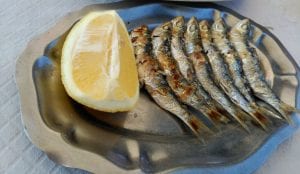
One Malaga day course has a particularly enticing schedule which goes as follows: ‘a tour of El Palo and its distinct features and spots, a visit to the traditional shipyard and maritime museum where guests will see handmade boats and arts, an espeto cooking class taught by a grill-master, and finally, an espeto tasting on the beach accompanied by salad, bread, a drink, and a thematic gift.’
They may not be the biggest or flashiest fish, but they have had a massive impact on culture, gastronomy and tourism in Spain. The famous Costa del Sol ‘lifestyle’ simply would not be the same without them.

